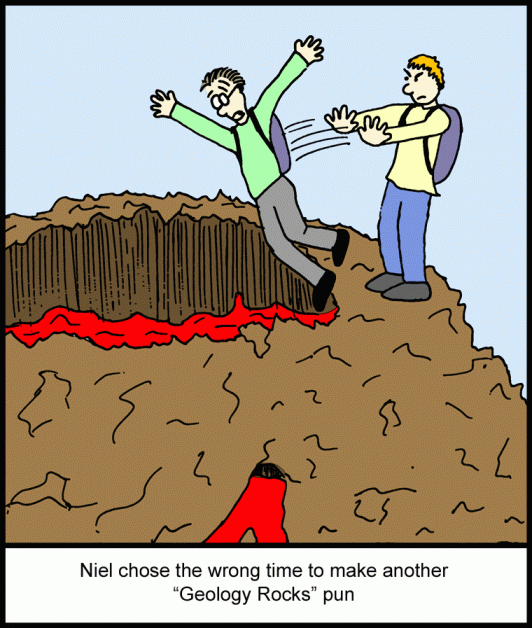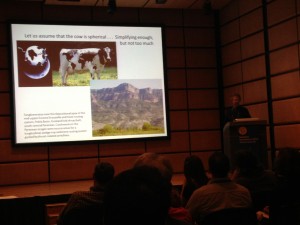More sedimentology than you can shake a stick at
This was originally posted at: http://blogs.egu.eu/palaeoblog/?p=549
Welcome to Day 3 of the EGU Annual Meeting. Do check the Geology for Global Development page too for some cracking updates on the sessions, particularly on the more ‘applied’ side of the geosciences, by Rosalie Testovin. This post is a quick break-down of some cool science from the morning session on the interaction between tectonics (faulting and folding from plate-related movements) and stratigraphy (the way in which rock packages are linked with each other). Naturally, I had to cover this one, as it was co-sponsored by the Geological Society of London (I’m an ex-employee), and was convened by a member of my department (Dr. Alex Whittaker) at Imperial College with another giving a talk (Prof. Phillip Allen). Here’s a quick break down of some of the talks (at least in as much detail as to be expected from a vertebrate palaeontologist):
Using thermochronology (dating events in rocks using isotopic ratios), combined with old-school optical techniques, it was possible to discern the origin and timing of origin of the sands in the Saudi Arabian desert.

Salt can flow, and transport sediments on top great distances (e.g., in the Gulf of Mexico). They also are relatively weak aspects of bedrock, so are preferentially deformed in sedimentary basins. You can see this using 3D ground-penetrating imaging techniques, where the surface representation of the deformation is revealed by depressions, domes from extrusions as the salt is squeezed upwards, and shear zones (fault zones, which accommodate the stress of moving salt), the direction of which is largely dependent on the position of the shelf edge and the direction of salt flow.
The eastern-Alpine mountains are a pretty geologically-complex area. New information from sediments in the region tell us about the sediment budget of the initial mountain ranges, the erosion rates, and where the sediments in the associated basins comes from (mountain ranges typically have associated sedimentary basins where the deposited sediments (molasse) are in some way related to the ‘unroofing’ of the mountains (erosion) or form due to topographic variations (e.g., see the basin and range province of SE Spain). An unconformity (stratigraphic hiatus in the rock sequence) in the foreland Alpine basin between the Quaternary and Miocene periods is indicative of a shift in the rate of erosion in the Alps. One interpretation of this is tectonically-driven uplift of the Alps, and the exclusion of climate change as a controlling parameter, which would have resulted in very different erosion rates.
Phillip Allen discussed a ‘source-to-sink’ model from the Eocene period of the Pyrenees, by looking at sediment routing systems resulting from the way faults within basins affect the topography (geomorphology). What this can give you is an understanding of the total volume of sediment supply, and the change in sediment types and grain sizes, which are a function of the way in which the sediments have been transported from their mountain. This sediment routing system appears to not have been affected by climatic variations, which would give a distinctive sedimentary profile by altering the sediment supply.

Unfortunately, I missed the last session by Brian Romans as firstly, there was a press conference on ‘reversing climate change?’, and also needed a coffee. (priorities)

2 thoughts on “More sedimentology than you can shake a stick at”